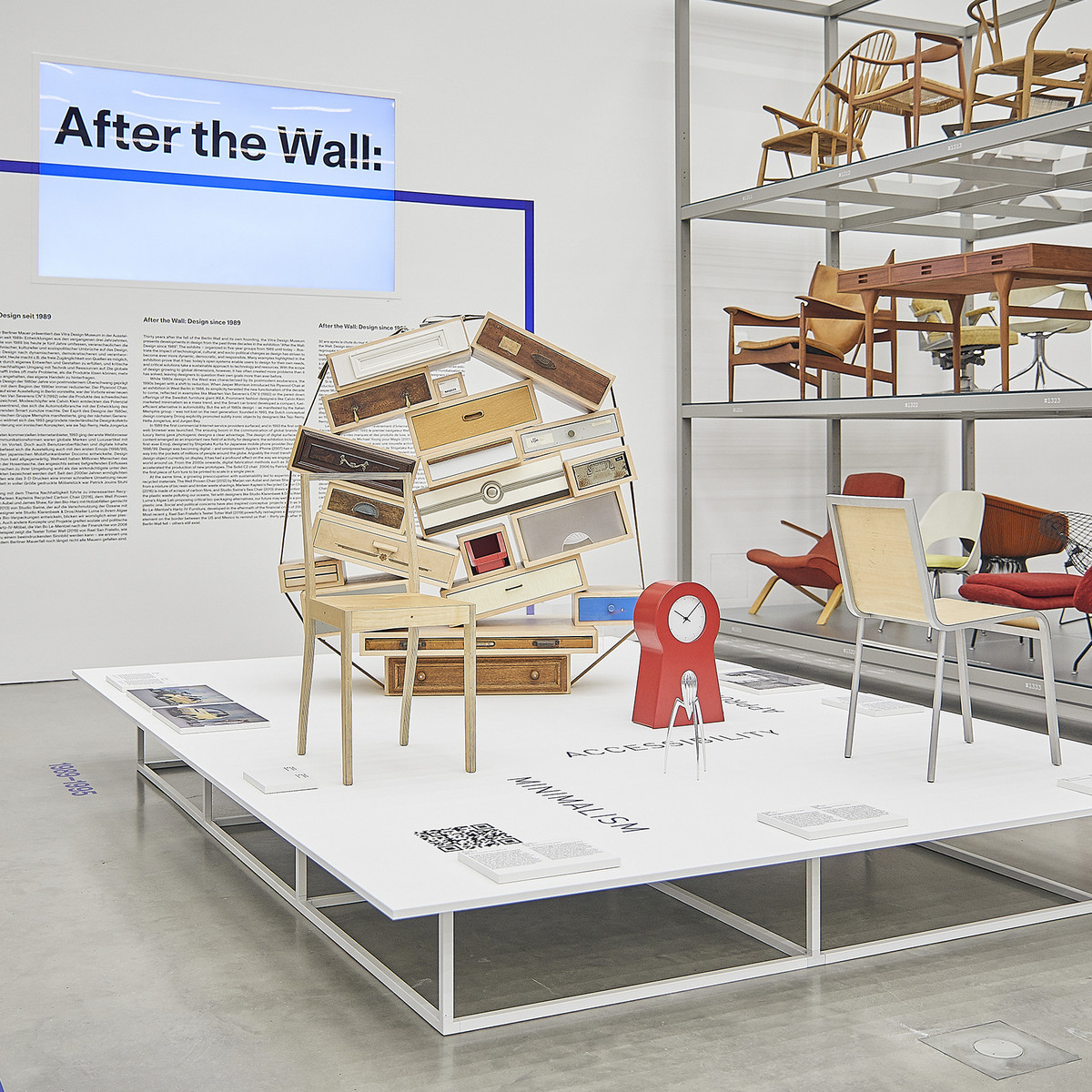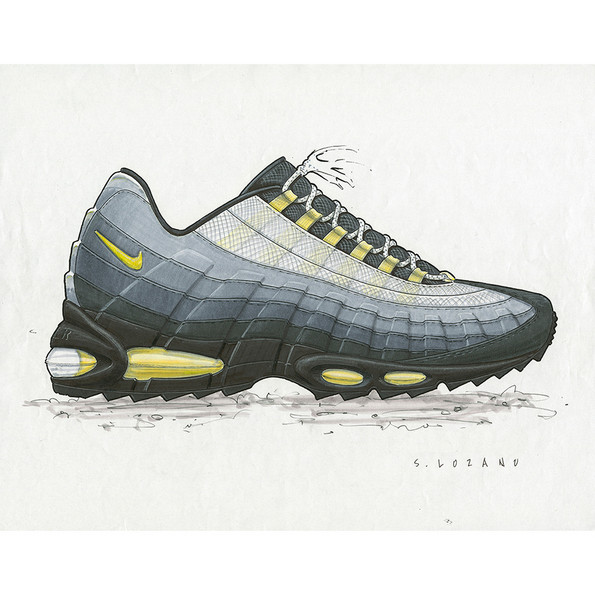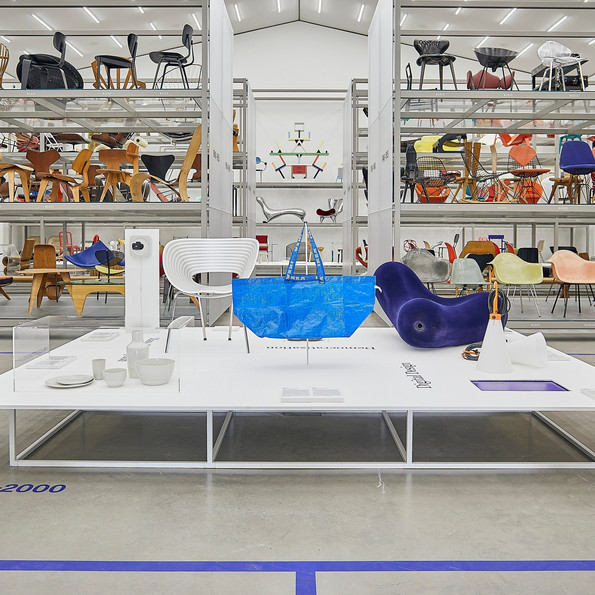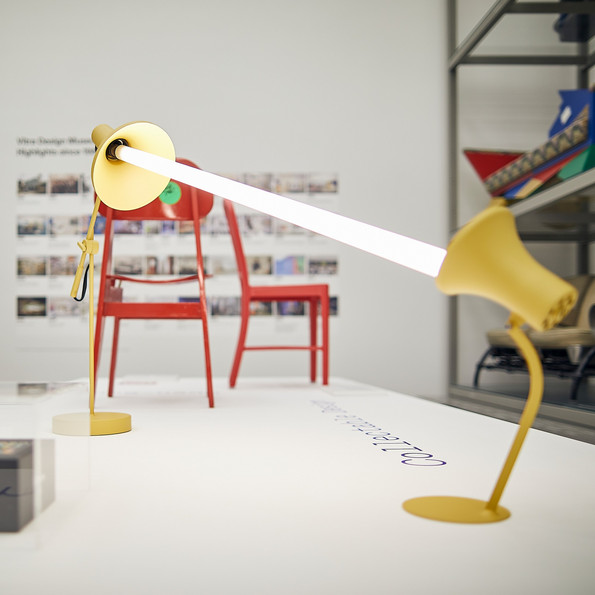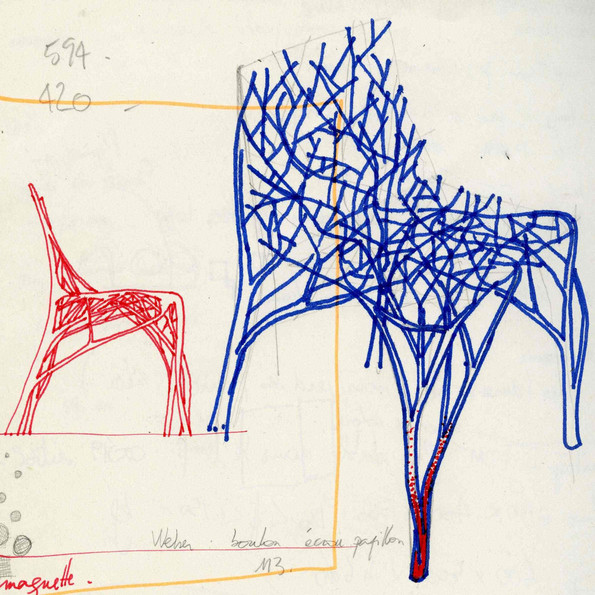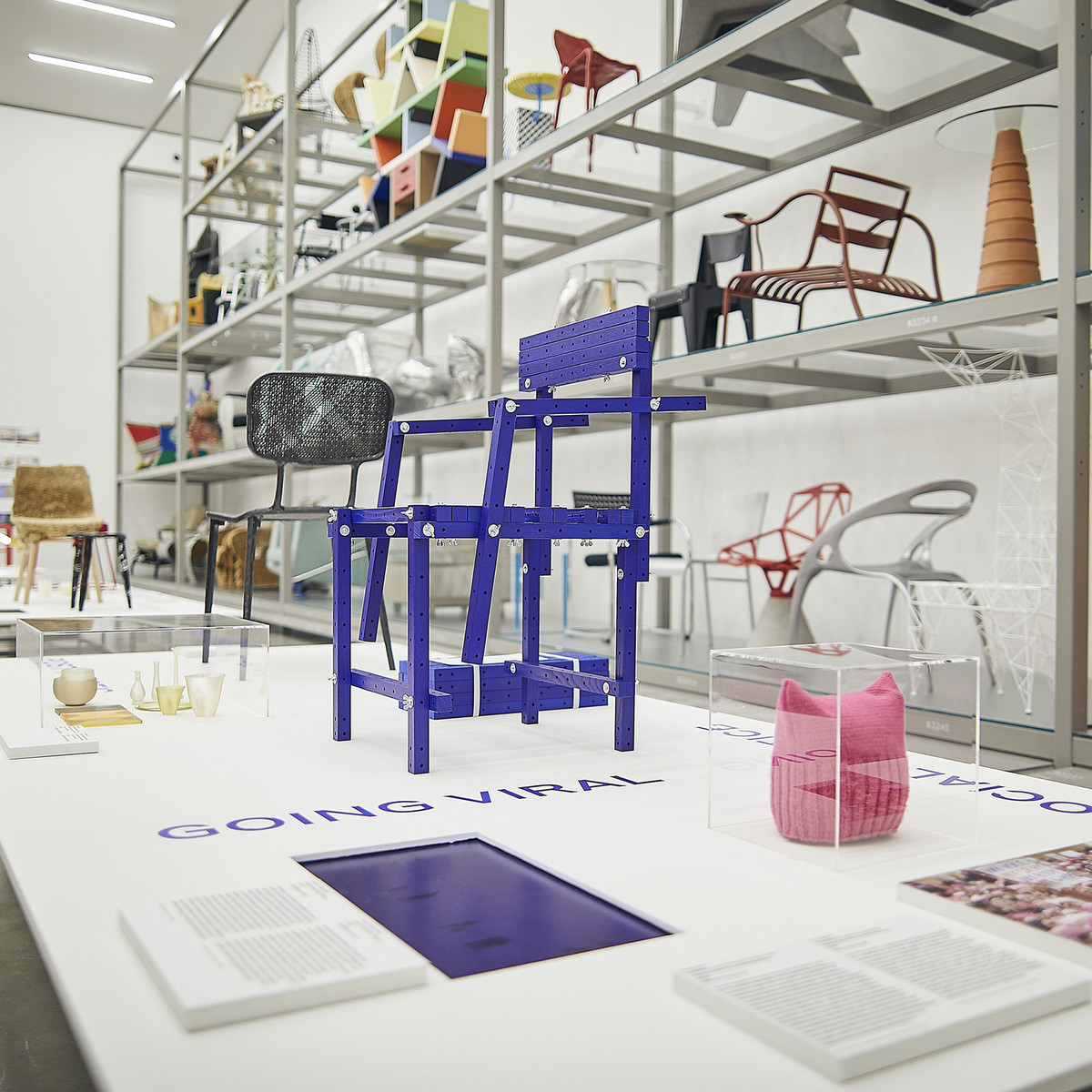After the Wall: Design since 1989
26.10.2019 – 23.02.2020
Vitra Schaudepot
Thirty years after the historic fall of the Berlin Wall, the Vitra Design Museum presents »After the Wall: Design since 1989« at the Vitra Schaudepot. Organized on the occasion of the museum’s own 30th anniversary, the exhibition charts design from the past three decades, examining how it has been shaped by broad technological, cultural, and socio-political shifts. The exhibition juxtaposes iconic product design and graphic design with works by leading furniture designers and retailers including Jasper Morrison, Philippe Starck, Hella Jongerius, Muji, and IKEA, as well as up-and-coming contemporary designers. The exhibits show that many of the global changes of the last 30 years have also been reflected in design: from a growing awareness of sustainability to social upheavals caused by the commercialization of the Internet in 1989. The latter has led to an undeniable flood of information and a radical acceleration of our everyday lives, which designers have also played a decisive role in driving forward – for example, with the first iPhone in 2007. Yet many of the works shown also point to critical ways of thinking that contribute to a responsible use of technology and resources.
While design in the West during the 1980s was characterized by a postmodern exuberance, the 1990s were characterized by a tendency towards reduction and simplicity. Prominent fashion designers like Calvin Klein transformed this into a fashion aesthetic suitable for the masses, while the new compact car brand »smart«, founded in 1994, caused a sensation in the automotive industry. As early as 1988, designer Jasper Morrison had created a symbol of »new functionalism« with his »Plywood Chair«, which later gripped the entire furniture industry. It incorporated a simplicity that was often paired with precious materials and particularly minimalist and material-saving design – evident in Maarten Van Severen’s »CN° II« chair (1992) or the affordable offerings of the Swedish furniture giant IKEA, which became a household name in the 1990s. The decade also saw idiosyncratic design tendencies like Tejo Remy’s chest of drawers »You Can’t Lay Down Your Memory« (1991), for which the designer salvaged drawers from existing pieces of cheap furniture, or Hella Jongerius’ »B-Set« tableware (1997), where imperfections were programmed into each serially produced piece. Both designers were originally propelled to fame by Droog, a Dutch conceptual design company founded in 1993 and known for creating objects enriched with subtle irony.
The 1990s were also the decade in which the Internet had its breakthrough: in 1989 the first commercial Internet service providers surfaced, and in 1993 the first online web browser was launched. The emergence of the Internet led to a boom in the communication of brands and luxury items, with photogenic and catchy designs having an advantage – like Philippe Starck’s »Juicy Salif« lemon squeezer (1990) or Michael Young’s »Dog House for Magis« (2001). At the same time, the design of digital surfaces and content started to become an important new field of activity for designers. This can be seen, for example, in the 176 Emoji that Shigetaka Kurita first designed in 1998/99 for the Japanese mobile phone provider Docomo.
The advent of computer-aided design and manufacturing also influenced the shape of everyday objects and is reflected in the technoid aesthetic of many devices of the time, most notably Apple products. From the 2000s onwards, digital fabrication methods such as 3D printing enabled new prototypes to be produced ever more rapidly and led to experiments that explored the potential for series production. The exhibition highlights one of the first-ever 3D printed chairs in this context: the »Solid C2« (2004) by Patrick Jouin. »After the Wall« also sheds light on design’s growing preoccupation with sustainability – experiments with recycled materials include the »111 Navy Chair« by Emeco (2010), manufactured from 111 recycled PET bottles, the »Well Proven Chair« by Marjan van Aubel and James Shaw (2012), »grown« by mixing bio resin with timber waste shavings, and Marleen Kaptein’s »Recycled Carbon Chair« (2016), made of scraps of carbon fibre material.
The exhibition shows a number of additional examples of how designers have both mirrored and helped shape social developments since the turn of the millennium – from the design of the first euro banknotes (2002) to the introduction of the first iPhone by Apple (2007), which radically changed the way we communicate, work and live. Likewise the lasting societal tensions since the financial crisis of 2008 have led to a politicization among designers, expressed in conceptual designs and projects with social impact. In Van Bo Le-Mentzel's »Hartz-IV-Furniture« we find the search for inexpensive products for the masses, while Viennese design studio mischer'traxler with its »Relumine« series (2010) applies the idea of »hacking« to light objects by simply modifying existing luminaires with the goal of saving energy. Even the much-cited crisis of the European Union was reflected in design. For example in Hauke Odendahl's chair »Union« (2019), which comes as a set of 28 loose blue components, each representing an EU member state, and allows its users to construct the chair as they see fit, resulting in a variety of interpretations.
The exhibition focuses on objects from the Vitra Design Museum's collection that have been created over the past 30 years, but it also raises more far-reaching questions: What role has design played in our recent history? How does our consumer behaviour influence the world we live in – and how does it influence us? And what will be the next big thing?
#AfterTheWall
#VitraSchaudepot
